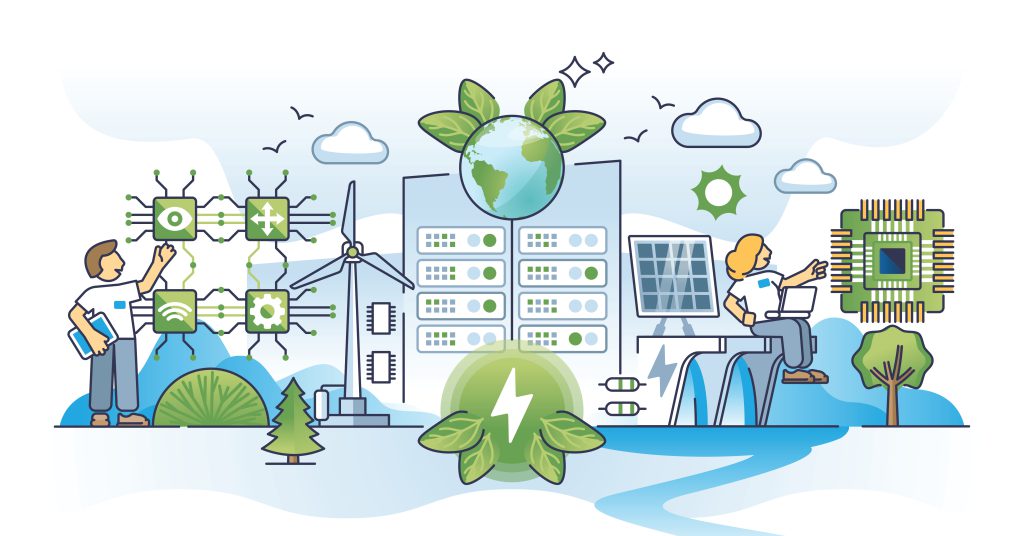The significant increase in life expectancy compared to the 1800s and 1900s is undoubtedly a remarkable achievement for humanity. Advances in medicine, improved living conditions, and better access to healthcare have all contributed to longer and healthier lives. However, this positive trend also presents a new set of challenges, particularly with regards to population growth and its impact on the environment. As people live longer, global populations continue to expand, putting a strain on the Earth’s finite natural resources. The increasing demand for food, water, energy, and other essential commodities intensifies the pressure on ecosystems and can lead to overconsumption and depletion of these resources. Additionally, population growth exacerbates pollution and waste generation, further compromising the delicate balance of our planet’s ecosystems.

Natural resources are the building blocks that sustain life on our planet, providing the essential elements for the survival and flourishing of all living organisms. Among these vital resources are water in its various forms, including both freshwater sources and the vast expanses of seawater that cover the Earth’s surface. Land serves as the foundation for ecosystems and habitats, while the lush forests, teeming with diverse vegetation, contribute to the planet’s biodiversity and serve as the lungs of the Earth, converting carbon dioxide into life-sustaining oxygen.The ever-increasing human population, coupled with changing consumption patterns and economic growth, has led to overconsumption of natural resources. Since 1970, this trend has been escalating, resulting in a precarious situation where Earth’s annual production of natural resources is being depleted faster than the planet can regenerate them. By the midpoint of each year, around 8 months or so, we have already consumed what the Earth can renewably produce, leaving a mere 4 months’ worth of resources for the rest of the year. This trend threatens the ability of future generations to meet their needs and enjoy a high quality of life, making sustainable resource management a matter of utmost urgency.
To address this pressing issue, it is essential for individuals, communities, governments, and businesses to adopt more responsible and sustainable practices. Embracing renewable energy sources, transitioning to circular economies that promote recycling and reusing materials, protecting and restoring natural habitats, and promoting conscious consumption are all vital steps in ensuring a healthier and more balanced relationship with our natural resources.
What can businesses do?
Businesses play a pivotal role in tackling environmental challenges, particularly concerning the depletion of natural resources. Forward-thinking enterprises are recognizing the importance of sustainability and investing significantly in renewable energy sources like solar and wind farms, striving to lessen their reliance on finite and polluting non-renewable resources. Leading industry giants such as Microsoft, Apple, Google, and Facebook are at the forefront of this movement, actively pursuing the goal of operating entirely on clean and renewable energy, setting powerful examples for others to follow. As per Microsoft, “We increased our reuse and recycle rates of all cloud hardware to 82% and continue to pace toward our 2030 reuse and recycle goal of 90%. We also reduced single-use plastics across all Microsoft packaging to 3.3% and are on track to eliminate their use by 2025.“ [1]
In addition to the push towards renewable energy, the 4th Industrial Revolution (4IR) has ushered in a wave of transformative technological innovations that can have positive impacts on the environment. The advent of cloud technology, big data analytics, and the Internet of Things (IoT) presents a suite of cutting-edge solutions to address pressing environmental issues. These advanced tools enable businesses to monitor deforestation more effectively, optimize the supply and demand of renewable energy, and manage supply chains more efficiently, ultimately reducing environmental footprints and promoting responsible resource usage.
As a business looking to contribute to sustainability efforts, there are numerous practical steps that can be taken to minimize environmental impacts. Implementing comprehensive recycling programs for common items like paper, cardboard, packing materials, and ink/toner cartridges significantly reduces the amount of waste that ends up in landfills, mitigating harmful consequences on the ecosystem. Embracing energy-saving measures, such as turning off electronics and unnecessary lights, replacing traditional bulbs with energy-efficient LED ones, and adopting low-flow toilets, all add up to reduced energy and water consumption, fostering a greener and more efficient workplace.
Embracing automation and digitalization provides businesses with promising avenues to optimize workflow processes and reduce reliance on paper-based operations, leading to a decrease in resource consumption. Going paperless not only contributes to resource conservation but also streamlines operations, resulting in increased productivity and cost savings. By eliminating the need for vast amounts of paper, ink, and physical file storage, businesses reduce their demand for natural resources used in paper production and lower energy consumption associated with printing <Link to paperless blog>. Moreover, digital workflows enable quick and efficient access to information, promoting better data security, improved efficiency, and enhanced collaboration among employees. Embracing a paperless approach aligns businesses with environmentally responsible practices, making them more appealing to eco-conscious customers and stakeholders. Overall, transitioning to digital solutions <link to automated workflows blog> offers a strategic path for businesses to achieve sustainability and productivity goals while contributing to environmental preservation.
Cloud technology plays a significant role in conserving natural resources and promoting sustainability. Cloud service providers operate data centers with a strong focus on energy efficiency, utilizing advanced cooling technologies and server consolidation to reduce power consumption and carbon emissions. By dynamically allocating computing resources based on demand, cloud technology optimizes resource usage, resulting in energy and resource savings. Cloud-based collaboration tools and document management systems facilitate paperless workflows, reducing paper consumption and promoting forest conservation. Moreover, cloud-enabled remote work and virtual meetings reduce the need for physical travel, leading to decreased fuel consumption and lower greenhouse gas emissions. Many cloud providers such as Microsoft Azure are also investing in renewable energy sources to power their data centers, further supporting clean energy adoption. <Link to Cloud Deployment blog>
By leveraging cloud-based SaaS applications, businesses can minimize their environmental impact in several ways. Firstly, SaaS eliminates the need for on-premises hardware, reducing electronic waste and the consumption of raw materials during the manufacturing process. With SaaS, multiple users share the same cloud infrastructure, leading to resource consolidation and energy efficiency. As SaaS applications are accessed through web browsers, there is no need for physical installation, saving paper and packaging materials. Additionally, SaaS providers operate data centers that prioritize energy efficiency, employing eco-friendly cooling systems and renewable energy sources to power their services. This shift to cloud-based solutions encourages a paperless working environment, as documents and data are stored digitally, leading to less paper usage and more efficient document management.

In conclusion, the significant increase in life expectancy is a testament to human progress and achievements in healthcare and living conditions. However, the rising demand for resources puts immense strain on the Earth’s finite natural resources, threatening the delicate balance of ecosystems and sustainability. To address these urgent concerns, forward-thinking businesses are leading the way by investing in renewable energy sources and adopting transformative technologies like cloud computing, big data analytics, and IoT to monitor and manage resources more efficiently. Embracing automation and digitalization, businesses can optimize workflows, reduce reliance on paper, and contribute to environmental preservation. Cloud-based SaaS applications such as AffableBPM play a key role in resource conservation by eliminating on-premises hardware, promoting energy efficiency, and facilitating paperless operations. By collectively embracing sustainable practices and innovative technologies, we can preserve natural resources for future generations and create a more sustainable and eco-friendlier world.
[1] https://blogs.microsoft.com/on-the-issues/2023/05/10/2022-environmental-sustainability-report